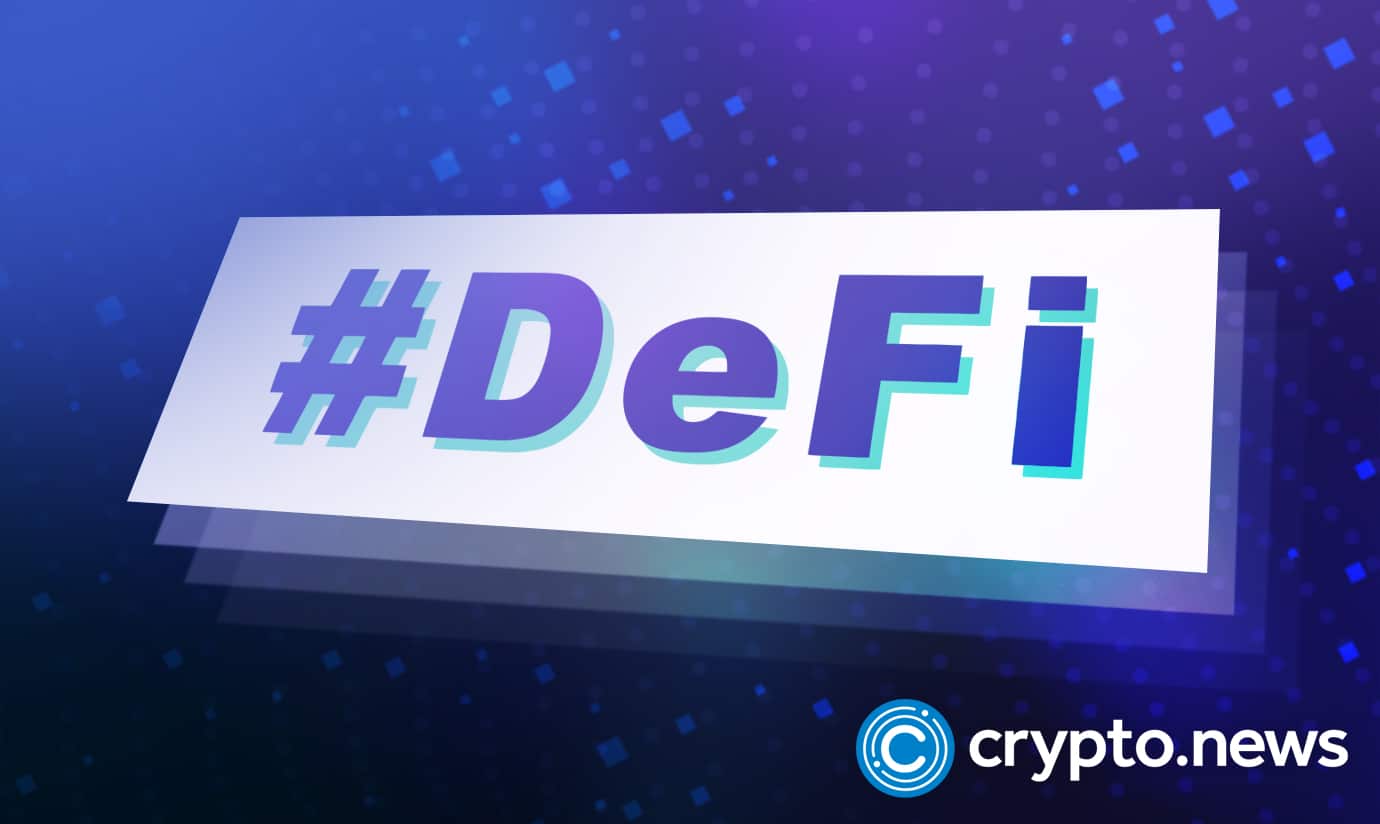What Is an Automated Market Maker: A Beginner’s Guide to AMMs

Automated market makers (AMMs) are at the core of the billion-dollar decentralized finance (DeFi) industry. They are among the key innovations, the crypto industry brought forth. Read on to learn what automated market makers are, how they work, and why they are so popular.
What Are Automated Market Makers?
Automated Market Makers (AMMs) are the innovations that power decentralized trading protocols, eliminating the need for centralized order books.
Ethereum Co-founder Vitalik Buterin described the workings and use of AMMs in decentralized exchanges (DEXs) in 2016. Since then, AMMs have propelled decentralized finance (DeFi) to become the industry it is today.
On centralized exchanges, intermediaries such as experienced traders, hedge funds, and professional trading firms act as market makers. They are the ones providing liquidity to the exchange, ensuring that buy and sell orders are matched at all times. Moreover, market makers prevent exchanges from having low liquidity, thereby avoiding excessive price slippage. Slippage occurs when the asset price changes significantly just before a trade because of thin liquidity.
On the contrary, on decentralized exchanges, the function of market making is carried out by automated algorithms that use self-executing software programs known as smart contracts to set asset prices. The liquidity for AMMs is coming from liquidity providers. They fund so-called liquidity pools, which are pools of funds in a smart contract that replace a centralized order book.
Examples of AMMs include Uniswap, Sushiswap, PancakeSwap, Balancer, and Curve.
How do Automated Market Makers Work?
AMMs use mathematical equations to set the relationship between digital assets in a pool. This ensures that there are no disparities in the pricing of pooled digital assets.
For instance, many DEXs like Uniswap use the equation x*y=k. “X” represents the value of asset A while “y” depicts the value of asset B. “K” is a constant. Price formation is done according to this formula.
To illustrate, let’s imagine a trader wants to purchase USDC with ETH. They’ll use the USDC/ETH liquidity pool to add ETH and remove USDC. That means the amount of ETH in the pool will increase, while that of USDC will decline and cause a price rise. Hence, the price of USDC will rise, and the price of ETH will fall.
Therefore, large orders can create significant price discrepancies between the liquidity pool and centralized exchanges. This creates an arbitrage opportunity where traders can buy an asset cheaper on the DEX and then flip it for a profit on an exchange where the price is higher. This is where arbitrage traders come in. They seek assets trading at discounted prices in liquidity pools and purchase them, only to sell them at higher prices on exchanges. Arbitrage traders keep on doing this until DEX asset prices match overall market prices.
The Role of Liquidity Providers in AMMs
Liquidity providers (LPs) are market participants that add their crypto assets to liquidity pools. Because of the permissionless nature of AMMs, anyone with liquidity can become a liquidity provider. As a result, the users of a DeFi protocol can trade against these assets. This way, liquidity is maintained using smart contracts on the platform, preventing slippage.
DeFi protocols motivate users to become liquidity providers with incentives. An example of an incentive could be a fraction of all the transaction fees paid in the pool by traders.
To illustrate, if your contribution to the liquidity pool represents 5% of the total liquidity locked, you’ll receive LP tokens that make up 5% of the total transaction fees in the pool. If a liquidity provider decides to exit the pool, they’ll redeem their LP tokens to get their fair share of the transaction fees.
As further incentivization, some AMM-powered DeFi protocols might also issue a governance token to LPs and other users. The governance token gives holders the right to vote on decisions that affect the protocol.
Benefits & Drawbacks of AMMs
Anyone can become a liquidity provider in AMM-powered platforms whereas market makers are limited to financial institutions and professional traders. AMMs, therefore, give regular people a chance to participate more actively in the DeFi industry. Furthermore, AMMs have created an earning opportunity for anyone looking to profit from their crypto holdings.
AMMs also remove access barriers like know-your-customer (KYC). Users only need to connect their wallets to use AMMs. Moreover, these platforms are non-custodial, further providing more self-sovereignty to users. Non-custodial means that AMMs don’t hold their users’ private keys. Hence, users always remain in possession of the crypto assets they provide.
Besides earning from transaction fee incentives, LPs can acquire more crypto through yield farming. The term refers to temporarily putting your crypto assets at the disposal of a protocol. In return, you’re rewarded in the protocol’s governance tokens. This strategy is possible because LPs can move their assets between multiple pools in search of higher yields.
For instance, a user can move funds around within the DeFi protocol Compound, searching for the pool with the best APY. LPs can also move LP tokens to another protocol where they’ll earn in fees and governance tokens.
While LPs benefit from depositing their funds into liquidity pools, they face the risk of impermanent loss. The term refers to the price fluctuation of pooled assets.
Similar to any other investment in crypto, you can lose and earn money by providing liquidity. The loss arises when the price changes and becomes lesser than the price at the time of depositing. So, if you deposited 1 ETH at $2,000 and the price in the pool drops to $1,800 at the time of withdrawal, you will incur a loss on your ETH position. If the other asset in the pool doesn’t appreciate enough to compensate for that loss, you will take a hit on your LP position. The greater the change, the larger the loss.
Pools with less volatile assets are less exposed to impermanent loss. For instance, stablecoins are less volatile than regular cryptocurrencies.
Other drawbacks are that a lot of liquidity is needed to provide the same amount of slippage as centralized exchanges and AMMs could be at risk of technological hacks that exploit the complexities of smart contracts.
Also, liquidity providers have to deposit funds in trading pairs. That means they have to split their investment into two assets, one of which is less stable than the other.

 Sign up today
Sign up today
Top Automated Market Makers (AMMs)
Here are the top AMMs, according to data from DeFi Pulse at the time of writing this article. The ranking is based on total value locked (TVL). TVL refers to the total amount of funds users have deposited in a DeFi protocol.
Uniswap
Uniswap is an Ethereum-based decentralized exchange founded in November 2018. Users can swap ERC-20 tokens and earn liquidity provider rewards paid in UNI tokens. Uniswap has a TVL of $7.04 billion.
Curve Finance
Curve is an Ethereum-powered DEX focused on stablecoins. In addition to enabling uses to exchange stablecoin sand a number of other tokens, uses can mean yield farming rewards paid in CRV tokens. Curve has a TVL of $4.9 billion
Balancer
Balancer is an n-dimensional, Ethereum-based AMM that enables anyone to create or add liquidity to customizable pools and earn liquidity provider rewards. Balancer has a total TVL of $2.19 billion.
FAQs
Can Anyone Become a Liquidity Provider?
Yes. Provided you have a crypto wallet and digital assets you can deploy in a decentralized trading pool, you can become a liquidity provider on an AMM protocol.
Is Depositing Crypto in an AMM a Good Investment?
Depositing digital assets into a decentralized trading pool to earn liquidity provider rewards can be a good way to earn income on crypto assets you plan to hold for a long period of time. However, investing in DeFi products is inherently risky, so you need to be aware of all the risks involved before deploying capital as a liquidity provider in the DeFi markets
Are AMMs Safe?
Automated market maker protocols are powered by smart contracts. So if there are vulnerabilities or errors in the code, there is a chance that you could lose access to your funds. To mitigate this risk, you are probably best off only trading on AMMs that have undergone smart contract audits by reputable blockchain security firms.












